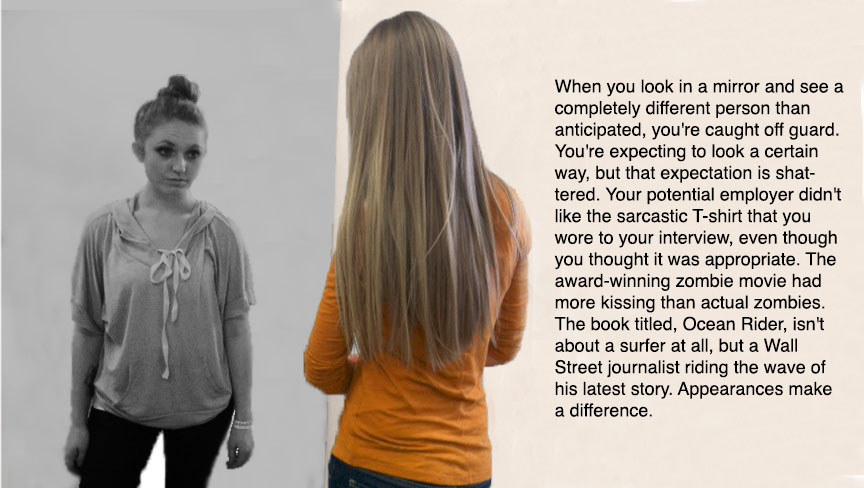My vote is they would get one look with an abrupt, “Thank you for your time.” A first impression can say it all. This can differentiate the approachable yet dapper from the down-right scary, or the responsible from the careless. People don’t deserve to be discredited right off the bat, but judgment is sometimes inevitable. To ensure a fair chance at creating a bond, he/she should dress in a way that gives them justice.
 |
| Erneta, Sue, Metzger, Erica. "The Fresh New You Makeover: The What Not to Wear Edition." Ladies Home Journal. Meredith Corporation. 2013. Web. 18 March 2013. |
 |
| Gemelke, Tenessa. "What Not to Wear: A Tale of Content Strategy." Our Blog. Brain Traffic. Web. 18 March 2013. |
Of course society nowadays throws
around the phrase, “Don’t judge a book by its cover,” but the act of judging is
in human nature, and isn’t always a bad thing. Companies expect the top notch
work ethic that potential employees should portray through their appearance. Wearing
nice clothes instantly demands respect in today’s society. Well-kept men in suits
are looked at as successful, while women in pencil skirts and glasses are seen
as brilliant. Because people put care into their appearance, employers believe
they will generate the same amount of attention toward their work.
The man mentioned above wouldn’t
be considered for the wait staff position because his casual attire suggests he
won’t provide the on-demand service the high-paying customers deserve. Now if
the khaki-wearing, band T-shirt-sporting chap walks into a surf shop, the
employers would surely give him a fair shot at the position because he would
fit right in to the laid back atmosphere, not to mention he looks impeccably
dressed for what his seemingly simple skill set is portrayed as.
If one expects an employer, or even a
potential friend, to give them the time of day when having first-time contact,
he/she needs to dress in a way that gives credit to who they are, or at least
how they wish to portray themselves.
Lyst. Lyst Limited, 2010. Web. 18
March 2013
Pregnant Fashionista, 2007. Web.
18 March 18, 2013
Sweetleelee. “Women Suits.”
Fashionnews21. Wordpress. Web. 18 March 18, 2013
Techman. “What’s Your Style?” Fashionrat.
Orble. Web. 18 March, 2013.










